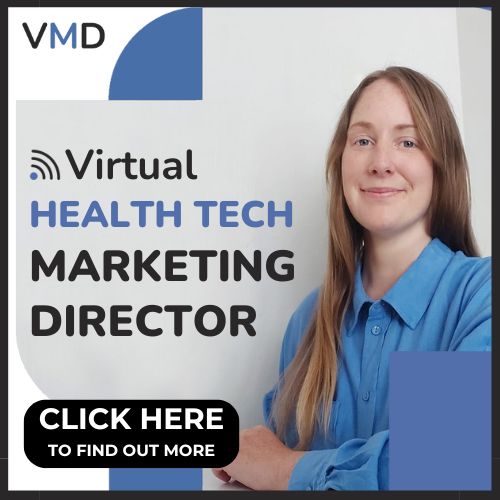
As the pandemic disrupted traditional patient service models, the healthcare sector overwhelmingly adopted remote and telehealth technology solutions. New global research from SOTI, A Critical Investment: Taking the Pulse of Technology in Healthcare, shows nearly all UK healthcare providers (97%) offering frontline services have implemented IoT/telehealth medical device capabilities
The increased adoption of new technologies in the healthcare sector is evident in 77% of IT healthcare professionals indicating they have increased their annual technology.
The rise in healthcare IT investments appears to be focused on three key elements: interconnectivity, automation and data management. Research revealed that 79% of IT healthcare professionals agree patient services benefit from heightened interconnectivity, 71% agree the use of artificial intelligence (AI) in patient care enables medical staff to treat more patients and 93% stated digital patient recordkeeping increases efficiency and enhances data sharing.
“Following the COVID-19 pandemic, mobile and IoT devices have become vital for healthcare organisations, allowing them to quickly adapt to changing circumstances, alter patient care methods and improve health outcomes. Almost all UK healthcare providers (97%) offering frontline services have now invested in IoT/telehealth medical device capabilities,” said Stefan Spendrup, VP of Sales, Northern and Western Europe at SOTI.
“UK healthcare organisations are scaling up device implementation in the medical industry, which demonstrates an increased digital focus in the UK. Increased digitalisation in the healthcare sector allows professionals to improve patient care and outcomes with remote health monitoring and digital recordkeeping. Today 70% of UK healthcare providers have already implemented remote health monitoring, with a further 51% of UK clinics providing frontline patient services with 100% digital recordkeeping,” said Spendrup.
As part of its report, SOTI surveyed 1,300 healthcare IT professionals across the UK, U.S., Canada, Mexico, Germany, Sweden, France and Australia to understand how their organisations pivoted to provide patient care throughout the pandemic, the role technology played in delivering positive patient outcomes and what major obstacles remain.
Data Security An Ongoing Concern
Nearly 9 in 10 (88% in the UK) of IT healthcare professionals are worried about patient information being revealed, lost, accessed, stolen or inadequately backed up. These are justified concerns as 45% (70% globally) of organisations have experienced a data breach since 2020. Healthcare IT professionals are primarily focused on the following data security concerns:
- Patient records being stolen in a cyberattack or hacking (37%)
- Patient information being revealed without patient consent (39%)
- Patient information being lost (36%)
In addition, 60% of IT professionals believe patient data security is more at risk than ever, while 53% agree their organisation does not spend enough money on data security.
“The risk of security breaches is a constant threat for IT leaders. While this is not hindering innovation and digitisation within the healthcare sector, this may impact an organisation’s confidence in the digital technologies and devices being installed. Healthcare providers must ensure the technologies deployed in their organisation are equipped with an effective Enterprise Mobility Management (EMM). These solutions will provide increased visibility, security and management of mobile technologies used to offer patient care. This allows IT professionals to remotely manage any mobile device or IoT endpoint, and enable them to shut the device down if there is a security breach,” said Spendrup.
Addressing Device Downtime
A move towards digitisation and eliminating outdated manual and paper processes allows healthcare providers to focus on patients and reduce the burden of administrative tasks that distract from caregiving responsibilities. However, when technologies are not properly implemented or maintained, costly downtime can hinder a healthcare workers’ ability to provide critical care.
Fifty-nine per cent of IT healthcare professionals said their organisation experiences downtime with IoT/telehealth medical devices, leading to patient care delays. Overall, more than 9 in 10 (95%) of IT healthcare professionals have experienced an issue of some kind, with 64% citing systems not integrating effectively and 52% stating frequent technical issues. All of this leads to each healthcare employee losing approximately 3.5 hours per week on average. To put it another way, on average, 21 working days are lost per employee annually.
“Increased digitalisation in the healthcare industry, like streamlining healthcare processes and patient care services, while making data more secure and easily accessible is making employees’ lives easier. However, 59% of UK IT healthcare professionals experience downtime with IoT/telehealth medical devices. IT leaders must ensure their mobile technologies have an advanced diagnostic intelligence solution in place to highlight device performance, provide remote support, improve the level of day-to-day operations and avoid patient care delays,” concluded Spendrup.
A Critical Investment: Taking the Pulse of Technology in Healthcare can be downloaded here.
Report Methodology
Using an online methodology, SOTI conducted 1,300 interviews with IT professionals in organizations providing frontline patient-facing healthcare services with 50+ employees across eight countries. All participants are aged 18 and over. Fieldwork was conducted from June 7 to 14, 2022. The interviews are split across eight markets as follows: U.S. (200 interviews), Canada (150 interviews), Mexico (150 interviews), UK (200 interviews), Germany (150 interviews), Sweden (150 interviews), France (150 interviews) and Australia (150 interviews).











